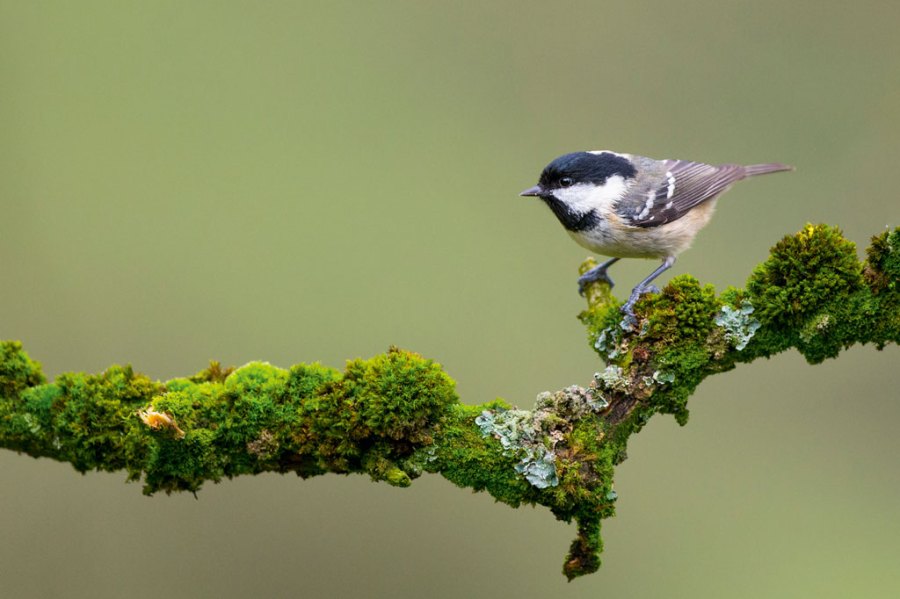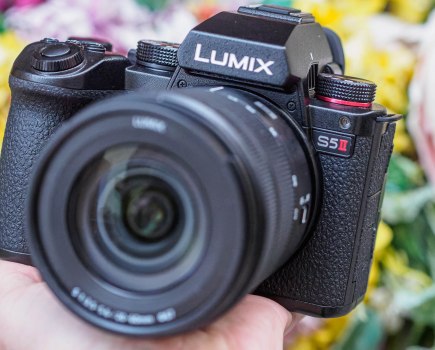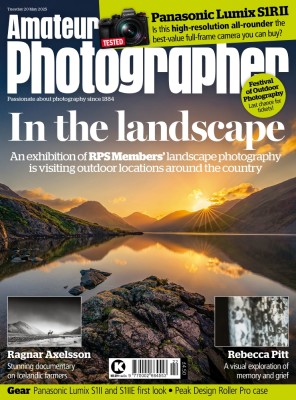With the right camera anyone can capture spectacular images of birds. Whether you seek shots of birds at rest, or iconic bird-in-flight (or BIF) images, bird photography is both highly rewarding and challenging. Here we run through our top-rated cameras for the task.
A good birding camera should have fast, accurate tracking autofocus and snappy burst speeds to get you the frame, while a sharp lens and decent resolution will ensure it looks good. Newer cameras also benefit from cutting-edge subject-detection autofocus, which intelligently recognises specific subjects, like birds, and locks focus onto them.
We’ve included a selection of cameras we’ve reviewed and rated. Newer, high-end, professional cameras like the Sony A9 III may technically be the ‘best’ but cost a fortune. We’ve identified budget and beginner-friendly picks for our list. All the cameras here have been tested by our team, and you’ll see plenty of images of birds that we’ve taken for a view of how each model performs.
For more expert advice, see our guides to getting great shots of fast-moving birds and how to be an ethical wildlife photographer. Now for those top bird photography cameras!
Best camera for bird photography – our quick list
In a hurry? Here’s a quick run-down of the cameras we’ve picked for bird photographers, along with links to get the best prices:
- Best camera for bird photography overall: OM System OM-1 Mark II – buy now
- Best beginner camera for bird photography: Canon EOS R10 – buy now
- Best enthusiast camera for bird photography: Sony A7 IV – buy now
- Best APS-C DSLR for bird photography: Canon EOS 90D – buy now
- Best Fujifilm camera for bird photography: Fujifilm X-H2S – buy now
- Best bridge camera for bird photography: Sony RX10 IV – buy now
- Best Panasonic camera for bird photography: Panasonic Lumix G9 II – buy now
- Best Olympus camera for bird photography: OM System ‘Olympus’ OM-1 – buy now
- Best full-frame DSLR for bird photography: Nikon D850 – buy now
- Best professional camera for bird photography: Sony A1 – buy now
- Fastest burst camera for bird photography: Nikon Z9 – buy now
Read on to learn more about each camera as we dive into what makes each one a great choice for bird photography…
Why you can trust Amateur Photographer…
We spend many hours testing every product we recommend, in detail, in a variety of situations and shooting scenarios, and only use experts for our reviews, so you can be sure that you’re getting the best products. Find out more about our expert writers.
Best overall
Best camera for bird photography overall: OM System OM-1 Mark II

Amateur Photographer verdict
This mirrorless, Micro Four Thirds marvel is the best camera you can buy for bird photography right now.- Bird AF is phenomenally accurate
- Rubberised dials can be used with gloves
- Fast burst shooting with generous buffer
- Menus could use search functionality
- Bird AF needs to be manuallly engaged (doesn’t auto-detect)
At a glance:
- Mirrorless camera
- 20MP Four Thirds Stacked BSI Live MOS sensor
- 50fps with C-AF, 120fps fixed AF with extended buffer
- 1,053-point AI detect Quad Pixel AF, with bird-detection mode
- 5-axis in-body stabilisation (8.5EV with Sync IS)
- $2,100 / £2,149 body only
A brilliant, versatile mirrorless camera, the OM System OM-1 Mark II is our pick as the best bird photography camera you can get just now. Weather-sealed for outdoor shooting, it also features rubberised dials that can be operated with gloves – a much-requested feature by users of the original OM-1.
The headline feature, though, is the sublime Bird Detection AF. Subject-detection autofocus has been the feature à la mode for new cameras for the past couple of years, yet this example of it is truly outstanding. Once activated (which needs to be done manually) it simply grabs hold of birds and doesn’t let go. The camera can also focus in low-light conditions, allowing for atmospheric shots in the very early or very late hours, when there are just a few strains of sunlight.
With fast burst shooting and an extended buffer, the OM-1 Mark II is well set up forthe shots you seek. As well as completing our own full review, we also passed it over to expert bird photographer Andrew Fusek Peters, who took it for a spin along with the M.Zuiko 150-600mm IS lens to see what it could do. Read our feature to see the incredible shots he captured – frankly, Andrew’s images do a much better job of conveying the brilliance of this camera for bird photography than we could with any words here.
Read our full OM System OM-1 Mark II review
Best beginner camera for bird photography: Canon EOS R10

Amateur Photographer verdict
Its autofocus system and continuous shooting speed are both in a different league to anything that Canon – or indeed anyone else – has previously offered in this price range.- Advanced features in a sub-£1000 body
- 100% AF coverage
- Snappy burst modes
- Few RF-S lenses (so far)
- No in-body stabilisation
At a glance:
- Mirrorless camera
- 24.2MP APS-C sensor
- 23fps shooting
- Dual Pixel CMOS AF II
- No stabilisation
- Price: $879 / £899 (body only)
The Canon EOS R10 continues in Canon’s fine tradition of small, tidy cameras that handle well and are pitched towards entry-level user. Of particular interest to bird photographers, however, is that this diminutive camera boasts Canon’s brand-new Dual Pixel CMOS AF II system, which covers one hundred per cent of the viewfinder. This ensures you can grab a subject no matter where it ends up in the frame, simply by moving the joystick under your right thumb.
This feature synergises well with the camera’s other strength for birders: its 23fps burst mode with the electronic shutter (it still manages a respectable 15fps with the mechanical shutter). In testing, we found the EOS R10 did well at capturing bird-in-flight images – it was used to capture the shot at the top of this post. It sometimes tends to focus on the background rather than the subject, which is something to watch for when shooting against a busy background.
This camera may not be as fast as the EOS R7, the bigger brother that was released at the same time, but it’s still going to be more than ample for most purposes. See our guide to great Canon RF mount lenses here.
Best for: bird photography on a budget
Best enthusiast camera for bird photography: Sony A7 IV

Amateur Photographer verdict
For any serious enthusiast contemplating buying a new camera, it has to be right at the top of the list.- Capable, intelligent autofocus
- Well-engineered handling
- Improved menus and touch interface
- No in-camera Raw conversion
- AF menus complex to configure
At a glance:
- Mirrorless camera
- 33MP full-frame sensor
- 10fps shooting
- Hybrid autofocus system with 759 selectable points
- 5-axis in-body image stabilisation
- Price: $1,998 / £2,149
With the A7 IV, Sony did a commendable job of updating and overhauling its do-everything A7 camera and made some additions that will be of particular interest to bird photographers. The autofocus system, while already excellent, has been upgraded to include eye detection and tracking that work not only with humans, but also animals, including birds. This makes it easier than ever to get pin-sharp bird-in-flight images.

As we said when we reviewed the camera, the handling has also been improved, with a deeper grip that makes the A7 IV much more comfortable to use than previous A7 cameras. Granted, the menus still aren’t that easy to navigate – despite some efforts to make them more user-friendly, some of that famous Sony abstruseness still remains.
You may find yourself consulting the manual more than a few times to try and work out what the heck a certain function is or does. Still, once you get to grips with it, the Sony A7 IV is an exemplary camera capable of producing stellar bird images.
To find out the very best lenses for the Sony A7 IV don’t miss our comprehensive Sony E-mount lens guide.
Best for: serious enthusiast birders
Read the full review of the Sony Alpha A7 IV
Best APS-C DSLR for bird photography: Canon EOS 90D

Amateur Photographer verdict
For advancing amateurs and keen enthusiasts alike, the Canon EOS 90D makes a sound choice- 1300-shot battery life
- Satisfying DSLR ergonomics
- Excellent image detail
- Excellent image detail
- AF shows its age
At a glance:
- DSLR
- 32.5MP APS-C sensor
- 10fps shooting
- Dual Pixel CMOS AF
- No stabilisation
- Price: $999 / £1,299 (body only)
The Canon EOS 90D could well end up being a piece of history – the last APS-C DSLR that Canon ever produced. If that turns out to be the case, then what a camera to go out on! The EOS 90D is an excellent DSLR, with tons of features that lend themselves to birding. An optical viewfinder is unsurpassable when it comes to immersing yourself in the action, and the APS-C sensor is able to capture some very impressive image detail.
While the EOS 90D does have Eye Detection AF, the focusing system overall is less advanced than we’ve seen in other cameras. You may not get quite as high a hit rate as you would with a more recent mirrorless machine. Still, the weather-proofing on the camera is top-notch, and its 1300-shot battery life means you can stay out shooting for long periods.
For more lens inspiration head over to our Best Canon EF lenses to buy article.
Best for: outdoorsy bird photographers who don’t mind bad weather
Read our review of the Canon EOS 90D
Best Fujifilm camera for bird photography: Fujifilm X-H2S
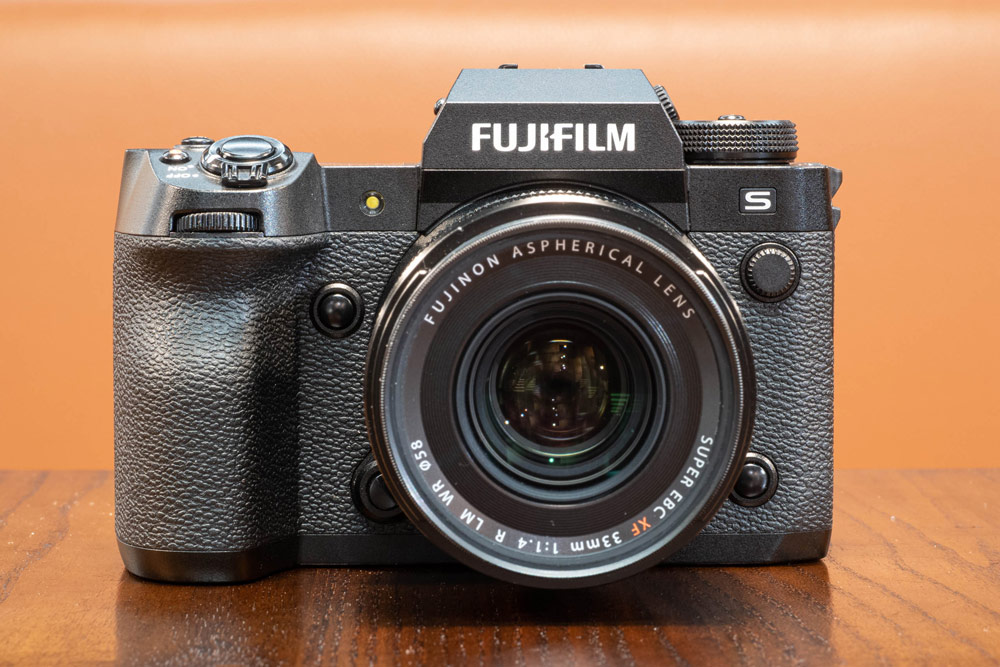
Amateur Photographer verdict
A truly high-performance pro-spec APS-C mirrorless camera that;s especially suitable for wildlife, sports and action shooting- Super-fast shootingImpressive buffer depth
- Impressive buffer depth
- Subject-recognition autofocus
- Big asking price for APS-C
- Fewer X-mount telephotos
At a glance:
- Mirrorless camera
- 26.2MP APS-C stacked BSI CMOS sensor
- 40fps shooting
- Phase-detection autofocus with AI subject detection
- 5-axis in-body image stabilisation
- Price: $2,499 / £2,499
The Fujifilm X-H2S is possibly the most advanced APS-C camera ever made and is a clear declaration that Fujifilm is committed to the format. This impressive camera sports a stacked sensor design which allows for super-fast readouts. Translated to Layman’s Terms, this means 40fps burst shooting in full-resolution Raw format, with full autofocus. Which is nothing to sneeze at.
The buffer depths of the X-H2S is hugely impressive; in our tests, it managed to capture 140 of those lovely Raw files at 40fps before starting to stutter. What’s more, if you drop it to 15fps, it’ll pretty much keep going indefinitely.
In a first for Fujifilm, the X-H2S boasts AI-based subject-recognition autofocus, which works for birds as well as other common moving subjects. In our full review of the camera, the bird detection AF was able to consistently nail shots of birds in flight, following them even when they were relatively small in the frame.

One thing to bear in mind is that the X-mount doesn’t have as many native telephoto lenses as others. This will be limiting for birders. There are some great choices though, like the supremely versatile Fujinon XF100-400mm f/4.5-5.6 R LM OIS WR lens.
Head over to our Best Fujifilm X-mount lenses article to read more about the XF 150-600mm F5.6-8 R LM OIS WR and XF 100-400mm f/4.5-5.6 R LM OIS WR.
Best for: style and physical controls
See why the Fujifilm X-H2S got five stars
Best bridge camera for bird photography: Sony RX10 IV

Amateur Photographer verdict
An all-in-one superzoom if you want to simply photograph your local wildlife without needing to buy a huge zoom lens for a DSLR, it’s the best you can buy- Generous zoom range
- Fast burst shooting and deep buffer
- 1/32,000sec shutter speed
- Max aperture drops very sharply when you zoom
- Expensive for a bridge camera
- No dedicated bird AF mode
At a glance:
- Bridge camera
- 20MP 1-inch sensor and 24-600mm equivalent f/2.4-4
- 24fps shooting speed
- 315 focus points
- Built-in optical stabilisation (4 stops)
- Price: $1,698 / £1,465
If you don’t want to be changing lenses, you could choose a bridge camera. Compact cameras styled like DSLRs, bridge cameras boast rugged ergonomics and long zoom lenses – and the top of the heap is the Sony RX10 IV. This is probably the best all-in-one camera ever made – its 1-inch sensor has a stacked design, making itcapable of incredibly fast readout speeds. This enables all sorts of speedy, bird-friendly features, like a 1/32,000sec top shutter speed, or 24fps burst mode. The RX10 IV also has a pleasingly deep shot buffer; you can keep that burst mode going for 110 RAW files or 249 JPEGs, should you wish to.
The RX10 IV doesn’t have a dedicated bird-photography mode per se, but its AF tracking modes are adept at locating and locking on to moving subjects. We tested it out on bird-in-flight images, and found the camera to acquit itself well.

For a cheaper alternative in similar style, you may also want to consider the Panasonic Lumix FZ2000, which has a shorter 24-480mm equivalent zoom lens. If, however the RX10 IV’s 24-600mm lens is not enough zoom for you, consider the Nikon CoolPix P1000, which uses a smaller sensor and wields a frankly absurd 24-3000mm equivalent zoom lens. We have a guide to the best bridge cameras, of course.
Find out why we gave the Sony RX10 IV the full five stars in our review.
Best Panasonic camera for bird photography: Panasonic Lumix G9 II
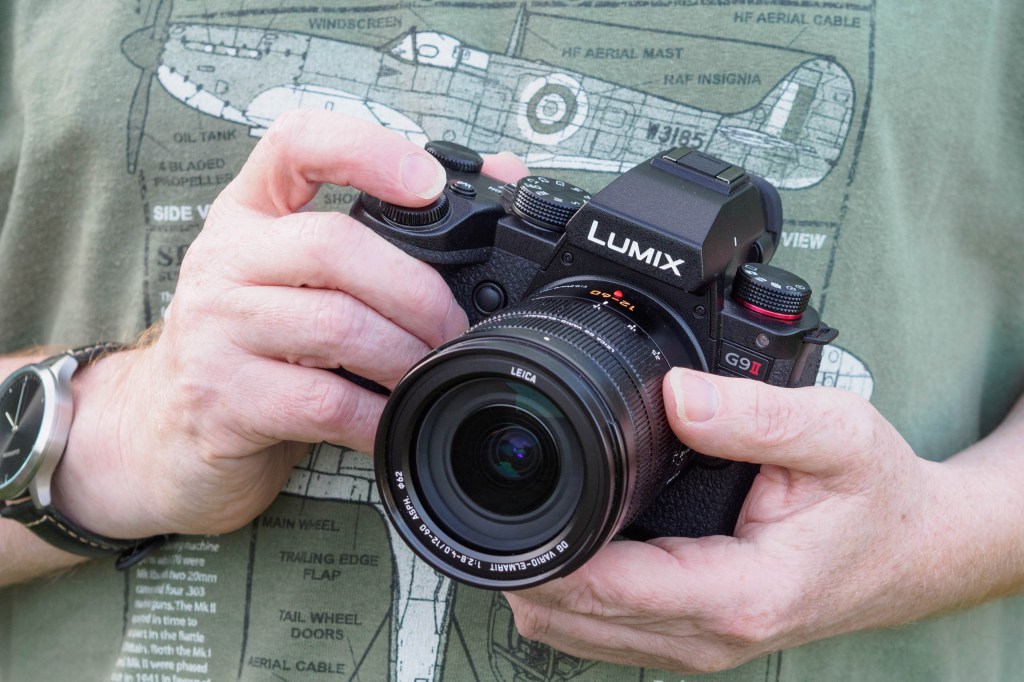
Amateur Photographer verdict
A lightweight, portable setup that in many situations will deliver image quality you’ll probably struggle to distinguish from full-frame models- Phase-detect autofocus with subject detection
- Sensible body design with well laid-out controls
- Big MFT lens selection
- Default colour settings a little uninspiring
- Price hike over previous model
At a glance:
- Mirrorless camera
- 25.2MP Four Thirds sensor
- Up to 75 fps shooting (60fps with continuous AF)
- Phase-detection autofocus with subject detection
- 8-stop in-body image stabilisation
- Price: $1,698 / £1,699 body-only
Panasonic’s newest Micro Four Thirds camera, the Lumix G9 II is a big improvement over the original Lumix G9, especially for bird photographers. The headline reason for this is the addition of something Panasonic shooters had long been wishing for – phase-detection autofocus, which offers significantly improved accuracy and speed compared to the contrast-based Depth from Defocus system the Lumix cameras had been using previously. This pairs with an AI-powered subject-recognition system capable of identifying and locking onto specific subjects – including, of course, birds.
With 75fps, and up to 60fps with continuous autofocus engaged, the Panasonic Lumix G9 II is not mucking around. Its body-design is based on the full-frame Lumix S5 II, and its controls are sensibly laid out, with key functions falling naturally under the hands. It’s got dual UHS-II SD card slots for storage, and can hot-charge via USB-C for continuous shooting. Excellent stuff across the board.
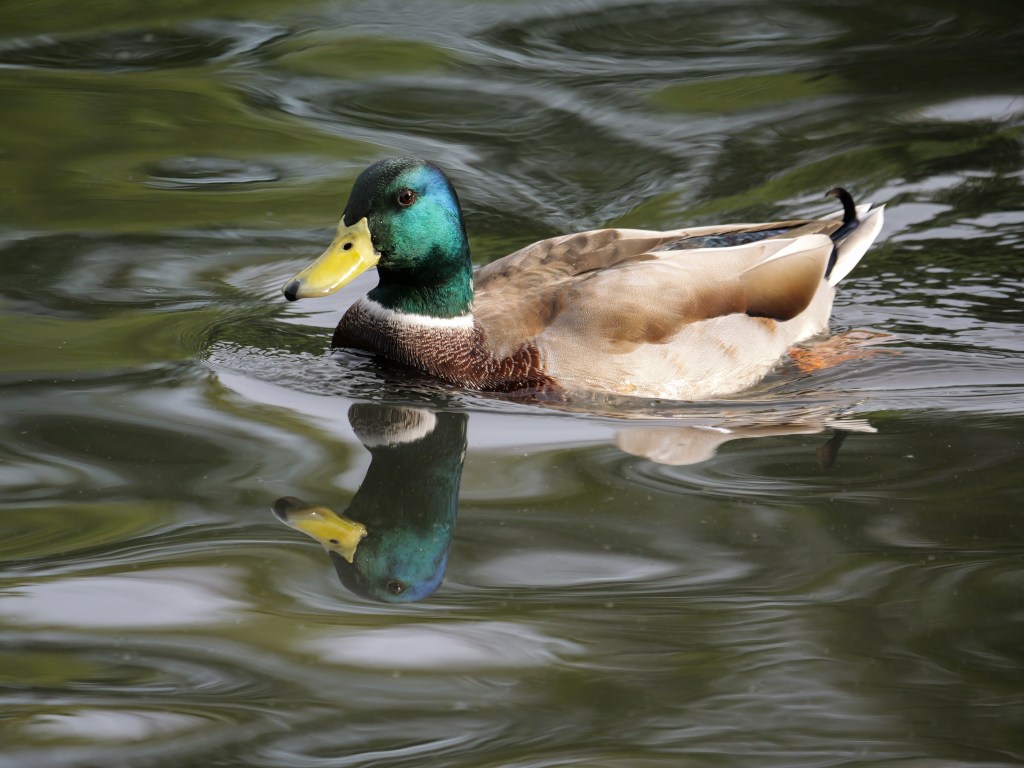
Image quality is also much better than previous MFT cameras, and while you may find yourself wanting to tweak the settings a bit for best results, the Lumix G9 II is a highly capable camera. It’s a price jump from the original Lumix G9, but for bird photographers, we’d say it’s worth it. You get so much more for your money.
Best for: portability and lens choice
Read our full Panasonic Lumix G9 II review.
Best camera for bird photography overall: OM System ‘Olympus’ OM-1

Amateur Photographer verdict
An MFT camera that brings image quality, subject detection AF, and high-speed performance together with an ultra high speed sensor- Blackout free 50fps C-AF
- Comprehensive weather sealing
- Class-leading stabilisation
- 20MP is on the low side
At a glance:
- Mirrorless camera
- 20MP Four Thirds Stacked BSI Live MOS sensor
- 50fps with C-AF
- 1053-point AI detect Quad Pixel AF
- 5-axis in-body stabilisation (up to 8EV)
- Price: $2,400 (from $950 used) / £2,349 (from £900 used)
The OM-System ‘Olympus’ OM-1 – was the first mirrorless camera from the OM System regeneration of the Olympus brand. It was unveiled as a bridging camera from one era to the next, hence the inclusion of ‘Olympus’ in its name. More importantly for our purposes here though, it’s absolutely sublime for bird photography. All of its features synergise perfectly for capturing images of birds in flight – its class-leading 1053-point Quad Pixel autofocus, ability to shoot Raw files at 50fps with continuous autofocus, and comprehensive weather sealing that’s perfect for long birding sessions spent outdoors.
We were hugely impressed by the OM System OM-1 when we reviewed it, especially how its 50fps burst shooting is blackout-free, so you need never lose sight of your flying subject. While it has since of course been superseded by the OM-1 Mark II that occupies the top spot of this list, the classic OM-1 is still brilliant for birding, and the release of the newer camera means it’s available for less money than it was at launch.
Two members of the AP team put the camera through its paces for a bird photography shooting session and had a chance to test out the dedicated Bird Detection AF mode. We found it enabled us to get sharp shots of birds time and time again.

Another member of the OM System camera family is the OM System OM-5, sitting in the middle of the range above the E-M10 Mark IV and below this camera. If you like the look of the OM-1 but it costs too much, the OM-5 is a credible alternative – check out our OM System OM-5 review to learn more. Check out our review of the OM System 150-400mm f/4.5 TC1.25x IS Pro too, an ideal lens for serious wildlife photography.
Best for: any bird photographer who wants to take great pictures!
Read our full review of the OM System OM-1.
Best full-frame DSLR for bird photography: Nikon D850

Amateur Photographer verdict
The Nikon D850 is the perfect blend of high-resolution, speed and performance. It’s perhaps the high-water mark of DSLR design and a classic in the making- Exceptional battery life
- Huge catalogue of F lenses
- High-quality, high-resolution sensor
- Ageing AF system
- Slower burst than newer cameras
At a glance:
- DSLR
- 45.7MP full-frame (FX-format) CMOS sensor
- 7fps continuous shooting (9fps with grip)
- 153-point autofocus system
- No stabilisation
- Price: $2,397 / £2,399
Many photographers still prefer rugged, durable DSLRs for bird and wildlife photography, and the full-frame Nikon D850 is arguably one of the best you can buy. It makes the best of all of a DSLR’s inherent advantages – so the body isn’t just big, it’s trustworthy and weather-sealed.
You’ve also got absolutely loads of F-mount lenses to choose from, so you’ll never be short of superb telephoto glass. The 45.7MP full-frame is no slouch, delivering superb, vibrant images full of detail. Also, if you don’t need such image quality, you can punch it down to DX Crop mode, which has the bonus of giving a little more telephoto reach.
The autofocus system does the job well enough. It’s not as advanced as you’ll find on recent mirrorless models, but the Pinpoint AF mode for small, moving subjects is pretty impressive. The big optical viewfinder is a fantastic way to follow and frame your flying subjects. Built like a tank, the Nikon D850 is a camera that any birder would be happy to spend a lifetime shooting with.
Best for: photographers who prefer a larger grip and chunkier handling
Nikon D850 Review: An all-round sensation
Best professional camera for bird photography: Sony A1

Amateur Photographer verdict
As expected from Sony’s flagship mirrorless full-frame it delivers remarkable performance but with a price to match- Auto AF-area good enough for birds
- Incredible overall speed
- Large, detailed EVF
- Roof-shattering price
- Some controls awkward with gloves
At a glance:
- Mirrorless camera
- 50.1MP full-frame Exmor RS CMOS sensor
- 30fps burst shooting
- 759-point phase-detection autofocus
- 5-axis in-body image stabilisation
- Price: $5,498 / £4,999
Sony’s spectacular mirrorless flagship, the Alpha 1, is good at pretty much everything, so naturally it’s a superb choice for bird photography.
When we reviewed this full-frame behemoth, our Technical Editor Andy Westlake ran the Sony A1 through its paces on a bird photography assignment. The result? A triumph.
The A1’s Eye AF algorithm is sophisticated enough to recognise the eyes of birds as well as people, and the auto AF-area selection is capable of handling birds in flight, able to acquire focus on the moving subject in a blink of an eye, and unerringly track it even through a messy background.
The other features of the Sony A1 lend themselves nicely to bird photography, too – the dual card slots, the 30fps burst rate, the 15 stops of dynamic range. It handles extremely well, and the image quality is exceptional in both JPEG and Raw formats – though be aware that the high-resolution sensor means you’re going to be chewing through a lot of gigabytes very quickly.
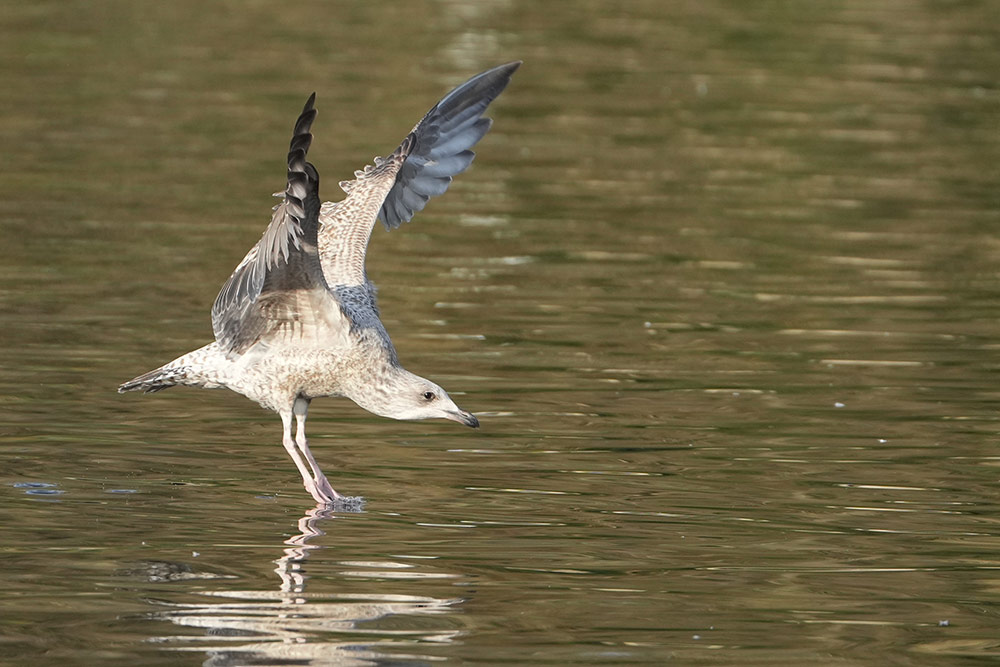
It can be worth knocking down to the 21MP APS-C crop mode if you’re worried about filling up your cards. Otherwise, the only real downside of the Sony A1, inevitably, is the price – it isn’t one for casual hobbyists.
We recently completed a long-term test of the Sony A1. This camera dazzled everyone with its spec sheet on announcement, but sometimes the only way to truly assess if a camera is worth its price tag is to spend a decent chunk of time with it.
Our long-term tester, photographer Callum McInerney-Riley, said, “When shooting people, animals and birds, using the camera’s eye-detection autofocus ensures amazing shots even in challenging situations. Even when other things are competing to be the dominant focal point in the frame, it manages to work out what’s important.”
Best for: professional photographers
Full review of the Sony Alpha A1
Fastest burst camera for bird photography: Nikon Z9
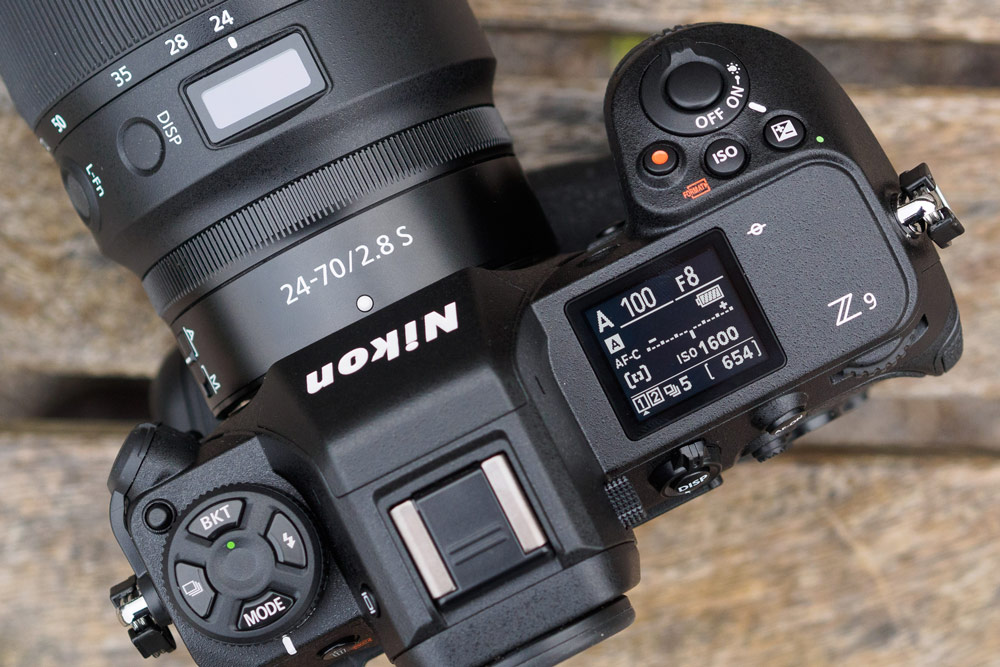
Amateur Photographer verdict
The first mirrorless model to put itself forward as a comprehensive replacement for pro full-frame DSLRs and it delivers impressively on its promise- Fastest-ever burst shooting
- Futuristic AI-powered AF
- Highly efficient Raw format
- Excellent viewfinder and screen
- Big, heavy, expensive
- Needs pricey memory cards
At a glance:
- Mirrorless camera
- 45.7MP full-frame stacked CMOS sensor
- 120 fps burst shooting at 11mp, 30MP full-res JPEG, 20fps Raw
- 493-point hybrid autofocus system
- 5-axis in-body stabilisation
- Price: $5,497 / £4,999
Nikon’s sports and action flagship, the mirrorless Z9, is the best burst-shooting camera ever made. Not only is it capable of shooting at a wizardly 120fps, but it can do so with continuous autofocus and tracking. It may not seem physically possible, but nevertheless, Nikon has managed it – the trick is the stacked CMOS sensor, which uses a memory layer beneath its light-sensitive pixels to deliver ultra-fast readout. This design also eliminates the rolling effect that can plague electronic shutter mechanisms, and as such, Nikon has gone ahead and got rid of the mechanical shutter altogether.
The AI-powered subject-detection autofocus is also a thing of beauty, capable of intelligently recognising all sorts of different subjects – yes, including birds. What’s more, you don’t need to pre-select birds the way you would with a Canon EOS R3 or Sony A1. The Z9 is smart enough to recognise them automatically.

The completely silent shooting is another feather (no pun intended) in the Z9’s cap, as it means you also run no risk of shutter sounds scaring birds away. You can tell this is a camera for pros by the ease with which it gets out of your way and lets you focus on shooting – the Nikon Z9 will nail the shot time and time again. It’s is one of the best choices you can possibly make for bird photography.
Best mirrorless camera for bird photography professionals
Read our full review of the Nikon Z9
How to choose the best camera for bird photography
Autofocus is critical; a camera needs to be capable of locking onto a moving subject and keeping focus as the subject continues to move (this is commonly referred to as Tracking AF). Some modern cameras have started including dedicated bird photography AF modes, which are designed to keep the eyes of a bird in focus for perfect avian portraits. Cameras with fast continuous burst modes are advantageous too, to ensure you don’t miss the perfect moment.
A question to ask of yourself is how much resolution you want. More megapixels are useful if you plan on printing your images, or if you’re aiming to get really close in to capture the details of feathers. However, a high-resolution camera isn’t the best choice for beginners, as all that detail will be very unforgiving. If your focus is even a hair off of that bird in flight, you’ll know it. Going for a lower-resolution camera also has the advantage of better high-ISO performance, allowing you to keep shooting when the light levels drop.
A good bird photography camera should also be weather sealed, and ideally give you a good selection of fast telephoto lenses with which to pick out your flying subjects. If you want a complete wildlife setup, check out our run-down of the best kit for wildlife photography.
How we test cameras
We test cameras by taking photographs and video in a wide range of real-world situations. We evaluate their control layouts, handling, and the usability of their viewfinders and screens. We assess their autofocus across a range of different subjects and shooting scenarios and test a camera’s continuous shooting capacity.
We also examine the effectiveness of image stabilisation systems. Last but not least, we critically evaluate the image quality in both JPEG and raw, including resolution, high-ISO noise, and dynamic range. For our final conclusion and score, we take all these factors into account, along with portability and lens systems. You’ll find the full breakdown of how each camera has performed in our full reviews.
Looking for more tips on how to capture birds? See these other articles:
- How to capture fast-moving birds (and animals)
- Get great garden bird shots
- How to photograph garden birds
- Photograph wildlife by understanding animal behaviour
- Low-light wildlife photography tips

